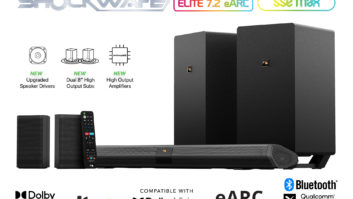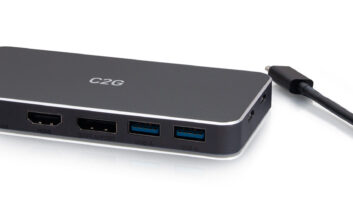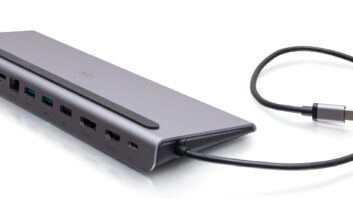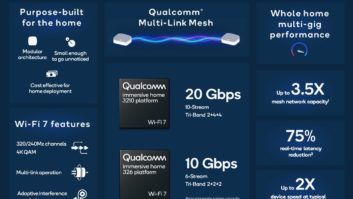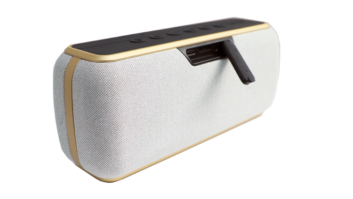Once upon time, I wandered into the showroom of a custom installer. A salesperson caught me giving their dedicated screening room the once-over, so he asked if I had any questions. To make polite conversation, I wondered aloud if they were using dipole surround speakers. After a somewhat pregnant pause, the salesperson haltingly replied, No, sir, we only use a single pole to mount surround speakers.
This anecdote underscores the rampant confusion over surround speakers in home theaters. Its really nothing new, nor is it likely to go away in the near future. In fact, Id put money down that the confusion will only increase now that 7.1 has finally arrived on the scene.
Wait, though, hasnt 7.1 been around for years? After all, youve been installing systems with side and rear speakers for nearly a decade, right? Unfortunately, if you thought those systems were 7.1, you werent entirely correct. Whats more, you may be missing out on an opportunity to upgrade them now that the real 7.1 is here.
In the Beginning
To understand 7.1, you must know a little history about multi-channel sound in the home. After some failed attempts at quadraphonic in the 1970s, the first truly successful multi-channel format was Dolby ProLogic Surround in the mid 1980s. To be fair, ProLogic isnt an actual discrete sound format. The left, center, right, and surround channels are encoded into two channels using an amplitude-phase matrix scheme.
The process suffers from some audible artifacts but works quite well overall at creating a surround sound field. About a decade later, Dolby and DTS introduced digital coding formats to record six tracks of sound on Laserdisc, DVD, broadcast, etc. Their formats are, in fact, called 5.1. There are five main wideband channels: left (L), center (C), right (R), side right (Sr), and side left (Sl). The sixth channel is low frequency only, with 0.1 of the bandwidth of the other channels. It is called low frequency effects (LFE). These channels are created and mixed by a sound team and approved by the film director, record producer, etc., before the content is released.
Figuring out what to do with surround speakers for 5.1 is pretty easy. Usually, you just install one speaker for Sl and one for Sr. If you like dipoles, you put them up on the wall at around 90 degrees rotation from the C. If you like direct-radiating speakers, you put them at about 110 degrees. If you have a big room with multiple rows, you might add a second speaker for each side channel. Its fairly simple stuff.
Then Came 6.1…or Not
Long about the time Lucasfilm was working on Star Wars Episode I: The Phantom Menace, Oscar-winning sound mixer Gary Rydstrom and I were discussing his longstanding frustration with panning sounds around a screening room. He just wasnt happy with the options for pans from the screen to the back of the room. About the best existing 5.1 systems could do was move the sound off the screen to the sides, then fuzz it out as it moved to the rear wall. That wasnt enough for Gary; he wanted the pan to clearly go all the way back.
We batted around a few concepts to address his concern, and the one that stuck became known as Surround EX. The idea was for Gary to create and mix 6.1 channels: L/C/R/Sr/Sl/rear (R)/LFE. In Garys dubbing stage, Sl would go to the existing array of surround speakers on the left wall, Sr would go to the right wall, and R would go to the rear wall. We then had to make those 6.1 channels fit on to existing 5.1 cinema release formats. I suggested that we encode the rear channel into the Sl and Sr using a level-phase matrix. The resulting track was backward compatible with 5.1 formats, and cinemas that wanted to upgrade to Surround EX could buy a decoder and access the rear-channel content.
Eventually, Surround EX found its way to the home market. It essentially works just like the cinema, except that two speakers are used for the rear channel instead of an entire array. These rear speakers are either dipoles or directs (depending on your preference) up on the wall at about 150 degrees.
While this is still the default configuration for Surround EX, there are several popular alternatives. Mostly notably, THX Ultra2 calls for the rear speakers to be much closer together. Special processing is then used to spread the rear sound field as necessary. One advantage of THX Ultra2 is that the physical proximity of the rear speakers to each other more closely emulates the original effect Gary wantedfor pans to clearly go to the back of the room. When the rear speakers are far apart, the sound field becomes much less directional. Dolby also introduced a processing algorithm called ProLogic IIx that takes any sourcefrom two channels all the way up to Surround EXand post-processes it for two rear speakers. ProLogic IIx tends to create a spacious stereo effect rather than directional rear wall pans.
Regardless of the speaker configuration, the rear channel is still encoded into the Sl and Sr. A decoder is necessary to extract it. Therefore, Surround EX is not a true discrete 6.1 format. (The mix is, but the track on the release formate.g. DVDis not.) To give credit where its due, DTS did come up with a version of Surround EX called DTS-ES Discrete where the rear channel is stored discretely on the release format. The rear channel is also encoded into the Sl and Sr and is subtracted out for 6.1 playback. In my book, this disqualifies DTS-ES Discrete from being truly discrete 6.1. Besides DTS, Windows Media Audio supports 7.1, but decoding hardware and software is scarce.
Now There Is 7.1
Thanks to Blu-ray and HD DVD, we now have widespread capability for both 6.1 and 7.1. Both disc formats support uncompressed PCM, Dolby Digital Plus, Dolby TrueHD, and DTS-HDall of which are capable of storing 7.1 discrete channels of audio. Yes, I mean L/C/R/Sr/Rr (rear right)/Rl (rear left)/Sl/LFE channels actually mixed by a sound team for a home release. Whats more, Dolby TrueHD and DTS-HD offer lossless compression, which means that the output of the decoder in players or AV controllers is identical to the PCM studio master that was encoded. Given these advancements, its easy to understand why were starting to see some titles released with 7.1 tracks.
To find out what goes into creating one of these tracks, youll have to read my next column. For now, realize two things. First, you have a business opportunity. Your customers are probably going to need a few hardware upgrades to enjoy 7.1. You may have to explain to them why you said they already had it: you built a sound system foundation for the upcoming formats, but the hardware is just now becoming available. Second, there are some technical details to consider in your installations so that 7.1 will work right. It may not be as simple as dropping in new hardware. Come back next time, and youll learn how its done.
Chase Walton contributed to this article.
